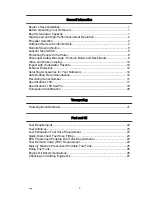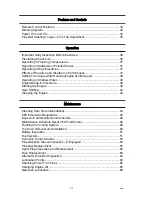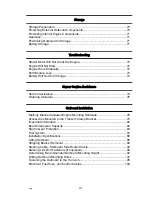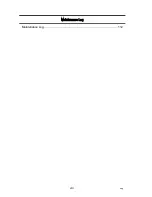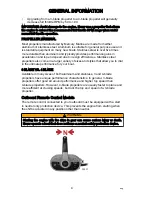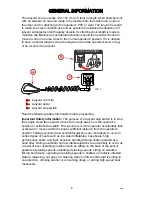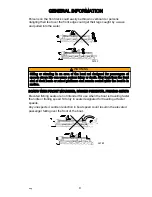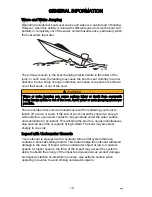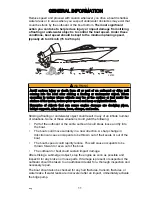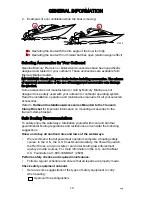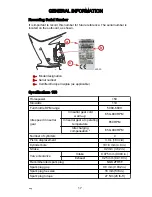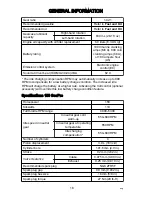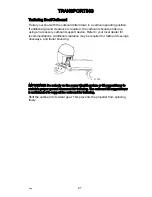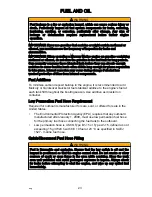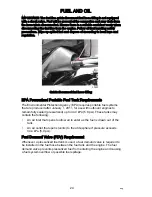
Reduce speed and proceed with caution whenever you drive a boat in shallow
water areas or in areas where you suspect underwater obstacles may exist that
could be struck by the outboard or the boat bottom.
The most significant
action you can take to help reduce injury or impact damage from striking
a floating or underwater object is to control the boat speed. Under these
conditions, boat speed should be kept to the minimum planing speed,
typically 24 to 40 km/h (15 to 25 mph).
26785
!
WARNING
Avoid serious injury or death from all or part of an outboard or drive unit
coming into the boat after striking a floating or underwater object. When
operating in waters where objects may be at the surface or just under the
surface of the water, reduce your speed and keep a vigilant lookout.
Examples of objects that can cause engine damage are dredging pipes,
bridge supports, wing dams, trees, stumps, and rocks.
Striking a floating or underwater object could result in any of an infinite number
of situations. Some of these situations could yield the following:
•
Part of the outboard or the entire outboard could break loose and fly into
the boat.
•
The boat could move suddenly in a new direction. A sharp change in
direction can cause occupants to be thrown out of their seats or out of the
boat.
•
The boat's speed could rapidly reduce. This will cause occupants to be
thrown forward or even out of the boat.
•
The outboard or boat could sustain impact damage.
After striking a submerged object, stop the engine as soon as possible and
inspect it for any broken or loose parts. If damage is present or suspected, the
outboard should be taken to an authorized dealer for a thorough inspection and
necessary repair.
The boat should also be checked for any hull fractures, transom fractures, or
water leaks. If water leaks are discovered after an impact, immediately activate
the bilge pump.
GENERAL INFORMATION
eng
11

